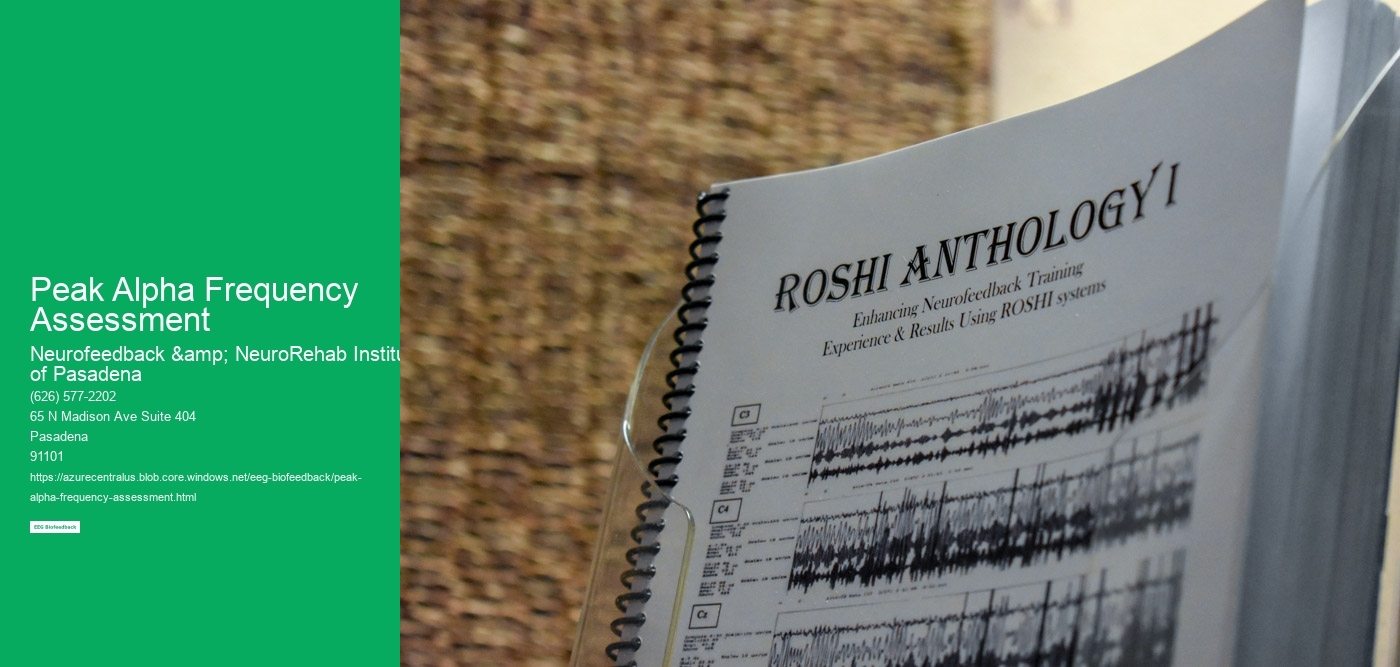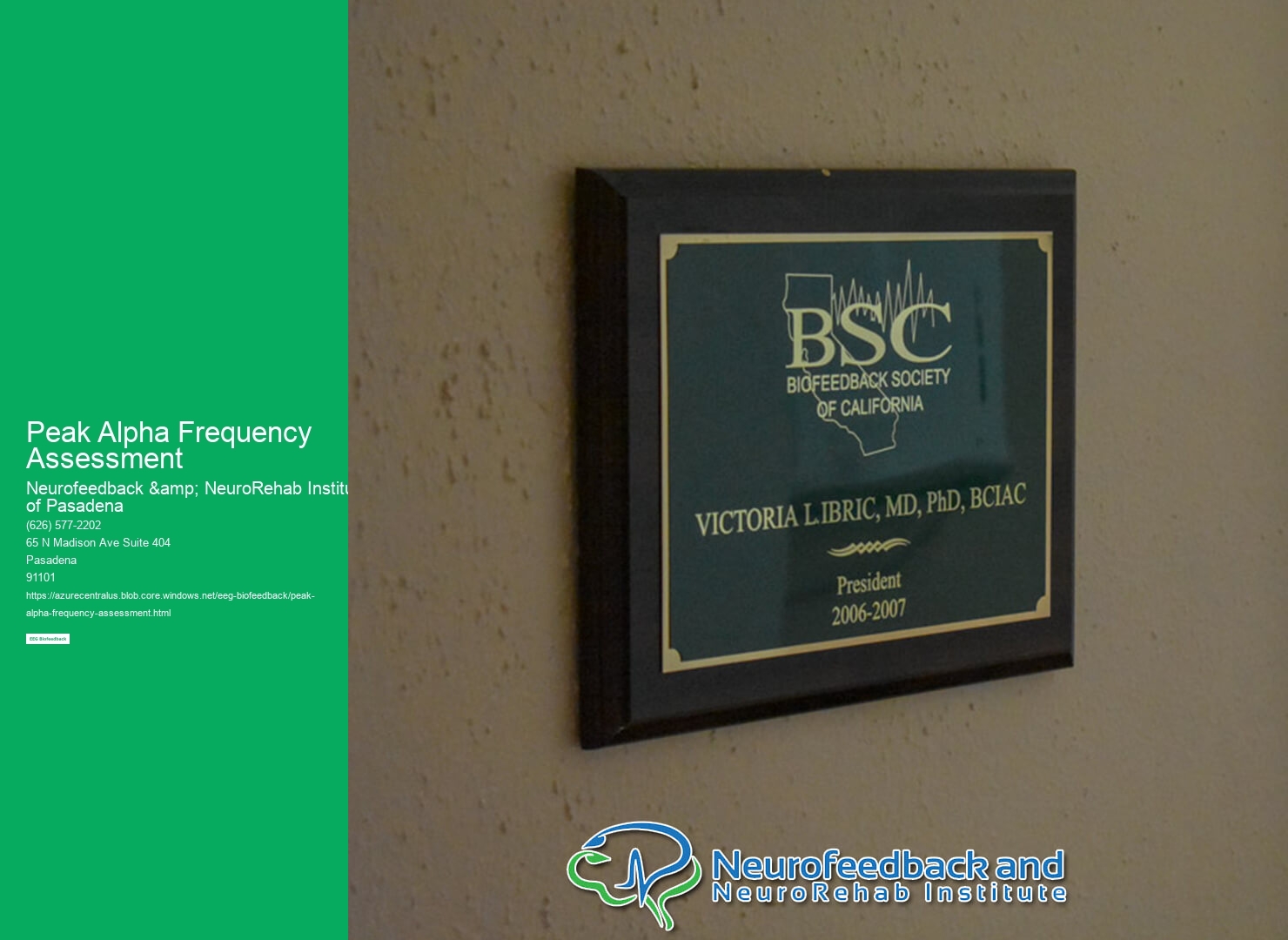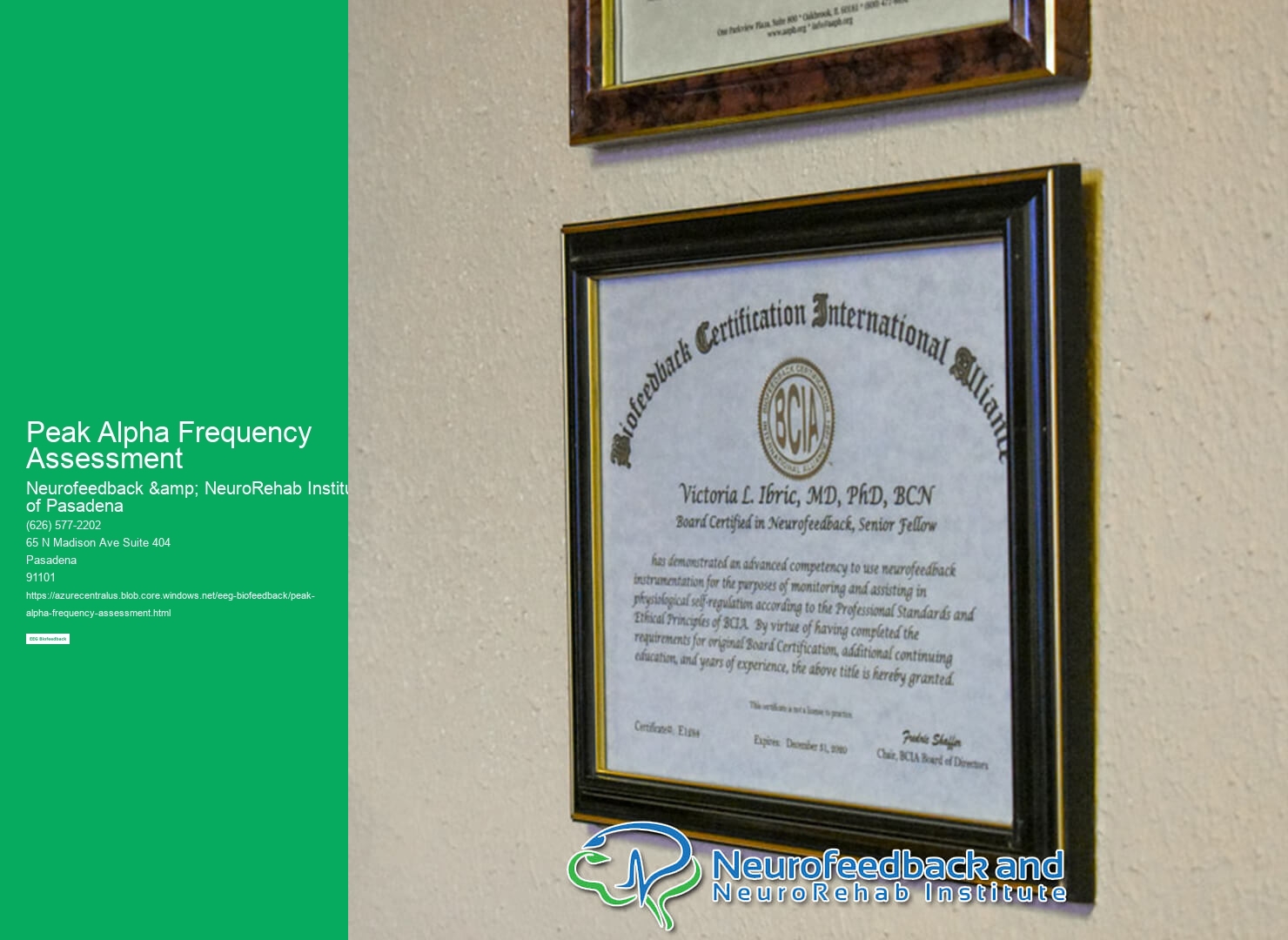

The relationship between peak alpha frequency and cognitive performance has been the subject of extensive research. Peak alpha frequency refers to the dominant frequency in the alpha band (8-12 Hz) of the brain's electrical activity. Studies have shown that individuals with higher peak alpha frequency tend to exhibit better cognitive performance, including improved attention, memory, and information processing speed. This suggests that peak alpha frequency may serve as an indicator of cognitive functioning and could potentially be used as a biomarker for cognitive abilities.
Age has been found to have an impact on peak alpha frequency. As individuals age, there is a general decrease in peak alpha frequency. This decline is thought to be associated with age-related changes in brain structure and function. Older adults tend to have slower alpha oscillations compared to younger adults, which may contribute to age-related cognitive decline. However, it is important to note that individual differences exist, and not all older adults will experience the same degree of decline in peak alpha frequency.
Peak alpha frequency has shown promise as a potential biomarker for neurological disorders. Research has found that individuals with certain neurological conditions, such as Alzheimer's disease, Parkinson's disease, and epilepsy, often exhibit abnormal peak alpha frequency patterns. These deviations from the typical alpha frequency range may reflect underlying brain abnormalities or dysfunction associated with these disorders. However, further research is needed to fully understand the diagnostic and prognostic value of peak alpha frequency as a biomarker for neurological disorders.

There are several potential causes of a decrease in peak alpha frequency. One possible factor is age-related changes in brain structure and function, as mentioned earlier. Other factors that may contribute to a decrease in peak alpha frequency include chronic stress, sleep deprivation, and certain medical conditions. Additionally, lifestyle factors such as alcohol consumption and substance abuse can also impact alpha frequency. It is important to note that a decrease in peak alpha frequency does not necessarily indicate a pathological condition, as individual differences in alpha frequency exist within the normal range.
Research has shown a correlation between peak alpha frequency and sleep quality. Studies have found that individuals with higher peak alpha frequency tend to have better sleep quality, including shorter sleep onset latency, longer total sleep time, and fewer awakenings during the night. Conversely, individuals with lower peak alpha frequency may experience more disrupted sleep patterns and poorer sleep quality. This suggests that peak alpha frequency may be a useful marker for assessing sleep disturbances and evaluating sleep interventions.


Meditation and mindfulness practices have been found to impact peak alpha frequency. Regular practice of these techniques has been associated with an increase in peak alpha frequency, indicating a state of relaxed and focused attention. This increase in alpha frequency may reflect enhanced attentional control and cognitive processing. Furthermore, studies have shown that experienced meditators tend to have higher baseline peak alpha frequency compared to non-meditators, suggesting that long-term meditation practice may have lasting effects on alpha oscillations.
While there is currently no specific intervention or treatment that can directly increase peak alpha frequency, certain lifestyle modifications and practices have been found to have a positive impact. For example, engaging in regular physical exercise, maintaining a healthy diet, and managing stress levels can contribute to optimal brain function and potentially support higher peak alpha frequency. Additionally, techniques such as neurofeedback training, which involves providing real-time feedback on brain activity, have shown promise in modulating alpha frequency. However, further research is needed to determine the efficacy and long-term effects of these interventions on peak alpha frequency.

ERP (Event-Related Potentials) play a crucial role in EEG biofeedback research due to their significance in understanding brain activity and cognitive processes. ERP refers to the electrical brain responses that are time-locked to specific events or stimuli. These responses are measured using electroencephalography (EEG), which records the electrical activity of the brain. By analyzing ERP patterns, researchers can gain insights into various cognitive functions such as attention, memory, and perception. ERP provides a non-invasive and objective measure of brain activity, allowing researchers to study the neural correlates of different cognitive processes. This information is valuable in the field of EEG biofeedback research as it helps in developing effective interventions and treatments for various neurological and psychiatric disorders. Additionally, ERP can also be used to assess the effectiveness of EEG biofeedback training by measuring changes in brain activity before and after the intervention. Overall, ERP is a powerful tool in EEG biofeedback research, enabling a deeper understanding of the brain and its functions.
The concept of resonance frequency biofeedback is applied in EEG biofeedback sessions by utilizing the individual's natural resonant frequency to optimize brainwave patterns. Resonance frequency biofeedback involves identifying the specific frequency at which the individual's brain and body are in a state of optimal functioning and balance. This is achieved by measuring the individual's brainwave activity using an EEG device and then providing real-time feedback to the individual. During the biofeedback session, the individual is guided to adjust their breathing rate and depth to match their resonance frequency, which is typically in the range of 6-10 breaths per minute. By synchronizing their breathing with their resonance frequency, the individual can enhance their brainwave patterns, leading to improved cognitive function, emotional regulation, and overall well-being. The use of resonance frequency biofeedback in EEG biofeedback sessions allows for a personalized and targeted approach to optimizing brainwave activity and promoting optimal brain functioning.
Brainwave modulation is a technique used in cognitive training with neurofeedback to help individuals improve their cognitive functioning. This process involves monitoring and analyzing the brain's electrical activity, specifically the different frequencies of brainwaves, such as alpha, beta, theta, and delta waves. By providing real-time feedback on these brainwave patterns, individuals can learn to modulate their brain activity and optimize their cognitive performance. For example, if an individual's brainwave patterns indicate excessive beta activity, which is associated with anxiety and stress, they can be trained to increase alpha activity, which is associated with relaxation and focus. This modulation of brainwaves can help individuals enhance their attention, memory, and overall cognitive abilities.
EEG biofeedback, also known as neurofeedback, is a non-invasive technique that can be utilized for stress management. By measuring and providing feedback on brainwave activity, individuals can learn to self-regulate their brain function and reduce stress levels. This technique involves placing electrodes on the scalp to detect electrical activity in the brain, which is then displayed on a computer screen or through auditory cues. Through repeated sessions, individuals can learn to recognize and modify their brainwave patterns associated with stress, such as increased beta waves or decreased alpha waves. By training the brain to produce more desirable patterns, such as increased alpha waves or decreased beta waves, individuals can experience improved stress management and overall well-being.
EEG biofeedback, also known as neurofeedback, is a technique that utilizes real-time monitoring of brainwave activity to train individuals to self-regulate their brain function. In the context of peak alpha frequency training, EEG biofeedback is applied by targeting the alpha frequency range (8-12 Hz) and encouraging individuals to increase their peak alpha frequency. This is achieved by providing visual or auditory feedback based on the individual's brainwave activity, allowing them to learn how to modulate their brainwaves and increase their peak alpha frequency. By consistently practicing this training, individuals can enhance their ability to enter a relaxed and focused state, which has been associated with improved cognitive performance and overall well-being.
EEG biofeedback, also known as neurofeedback, can be self-administered with the proper training and guidance. While it is possible to use EEG equipment at home, it is recommended to seek professional guidance to ensure accurate and effective results. Professional guidance can help individuals understand how to properly set up and use the equipment, interpret the data, and develop a personalized training plan. Additionally, professionals can provide ongoing support and adjustments to the training protocol based on the individual's progress and specific needs. This ensures that the self-administered EEG biofeedback is safe, effective, and tailored to the individual's goals and requirements.
Practitioners in EEG biofeedback programs address issues of compliance and adherence through a variety of strategies and techniques. Firstly, they educate clients about the importance of compliance and adherence to the program, emphasizing the potential benefits and outcomes. They also provide clear instructions and guidelines for the program, ensuring that clients understand the expectations and requirements. Additionally, practitioners may use motivational interviewing techniques to explore and address any barriers or challenges that clients may face in adhering to the program. They may also provide ongoing support and encouragement, monitoring progress and providing feedback to keep clients engaged and motivated. Furthermore, practitioners may tailor the program to the individual needs and preferences of each client, making it more personalized and relevant. Overall, practitioners employ a comprehensive approach to promote compliance and adherence, recognizing the importance of client engagement and commitment in achieving successful outcomes.